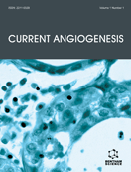Abstract
Stem cells and their differentiated off-springs are often used in the field of regenerative medicine and bone tissue engineering. As sufficient vascularization of bone grafts remains a main bottleneck, knowledge about angiogenic properties of these cell types is a prerequisite for choosing the best approach.
The chorioallantoic membrane (CAM) assay was used to study the impact of three primary human cell types (adipose-derived stem cells, osteoblasts and endothelial cells) and three differentiated cells (adiposederived stem cells differentiated towards osteoblasts or endothelial cells or a 1:1 co-culture of both); the control consisted of no cell seeding. Angiogenic properties were quantified after one week by imaging the CAM surface and analyzing vessel length, diameter, end points, sprouting, density and cross points with CapImage® software program.
While primary osteoblasts clearly enhanced angiogenesis with respect to vessel length, diameter and sprouting, primary endothelial cells did not support this process compared to the control. Primary adipose-derived stem cells behaved rather neutral. As for the differentiated cells, differentiated osteoblasts behaved similar as primary osteoblasts and differentiated endothelial cells similar as primary endothelial cells. The co-culture of differentiated cells did not enhance angiogenesis significantly. There were some inter-individual differences in angiogenic properties among different donors of stem cells related to their gene expression.
For the stimulation of angiogenesis in tissue engineered bone constructs, the use of primary cells is suggested because the differentiation towards osteoblasts as well as endothelial cells is not only time-consuming, but goes along with lower angiogenic activity compared to primary cells.
Keywords: Adipose-derived stem cells, angiogenesis, chorioallantoic membrane, endothelial cells, osteoblasts, vessel density, vessel diameter, vessel length.
Graphical Abstract
 12
12

